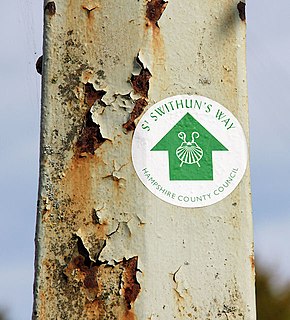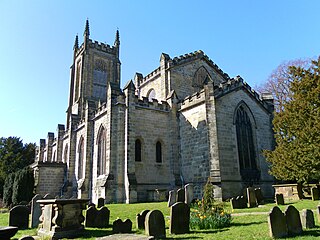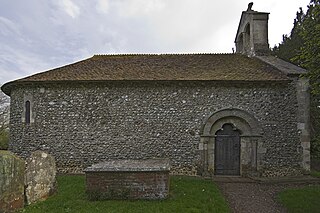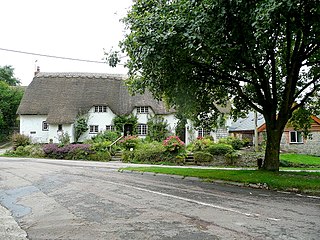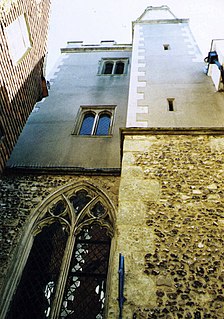Coordinates: 51°05′31″N1°15′54″W / 51.091993°N 1.265033°W

A geographic coordinate system is a coordinate system that enables every location on Earth to be specified by a set of numbers, letters or symbols. The coordinates are often chosen such that one of the numbers represents a vertical position and two or three of the numbers represent a horizontal position; alternatively, a geographic position may be expressed in a combined three-dimensional Cartesian vector. A common choice of coordinates is latitude, longitude and elevation. To specify a location on a plane requires a map projection.
| St Swithun's Church, Martyr Worthy | |
|---|---|
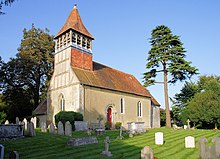 | |
| Country | England |
| Denomination | Church of England |
| Architecture | |
| Years built | 12th century [1] |
| Administration | |
| Deanery | Alresford |
| Diocese | Winchester |
St Swithun's Church, Martyr Worthy is a Church of England parish church in Martyr Worthy, Hampshire, England.

The Church of England is the established church of England. The Archbishop of Canterbury is the most senior cleric, although the monarch is the supreme governor. The Church of England is also the mother church of the international Anglican Communion. It traces its history to the Christian church recorded as existing in the Roman province of Britain by the third century, and to the 6th-century Gregorian mission to Kent led by Augustine of Canterbury.
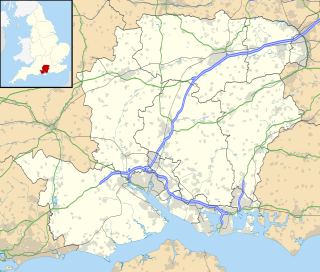
Martyr Worthy is a small village in the English county of Hampshire. It is part of the Worthys cluster of small villages.
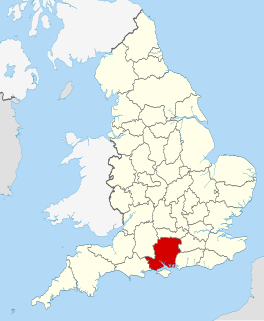
Hampshire is a county on the southern coast of England. The county town, with city status, is Winchester, a frequent seat of the Royal Court before any fixed capital, in late Anglo-Saxon England. After the metropolitan counties and Greater London, Hampshire is the most populous ceremonial county in the United Kingdom. Its two largest settlements, Southampton and Portsmouth, are administered separately as unitary authorities and the rest of the area forms the administrative county, which is governed by Hampshire County Council.
The church, parts of which date from the 12th century, [2] [3] is a Grade II* listed building. [2] The broach spire at The Barn Church in Kew, London is modelled on that of St Swithun's. [4]

A listed building, or listed structure, is one that has been placed on one of the four statutory lists maintained by Historic England in England, Historic Environment Scotland in Scotland, Cadw in Wales, and the Northern Ireland Environment Agency in Northern Ireland.
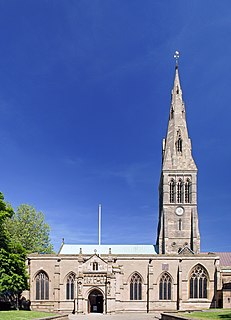
A broach spire is a type of tall pyramidal or conical structure (spire) which usually sits atop a tower or turret of a church. It starts on a square base and is carried up to a tapering octagonal spire by means of triangular faces.
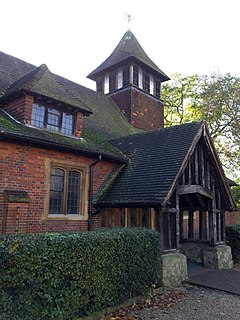
The Barn Church, Kew, formally known as St Philip and All Saints, is the first barn church to be consecrated in England. The building, which is not listed, is on the corner of Atwood Avenue and Marksbury Avenue, in an area previously known as North Sheen and now in Kew, in the London Borough of Richmond upon Thames. It was constructed in 1929 from a 17th century barn from Oxted in Surrey. The west end was converted in 2002 into a large parish room with a gallery above looking down the length of the building. The sanctuary was refurbished and remodelled in 1998.



